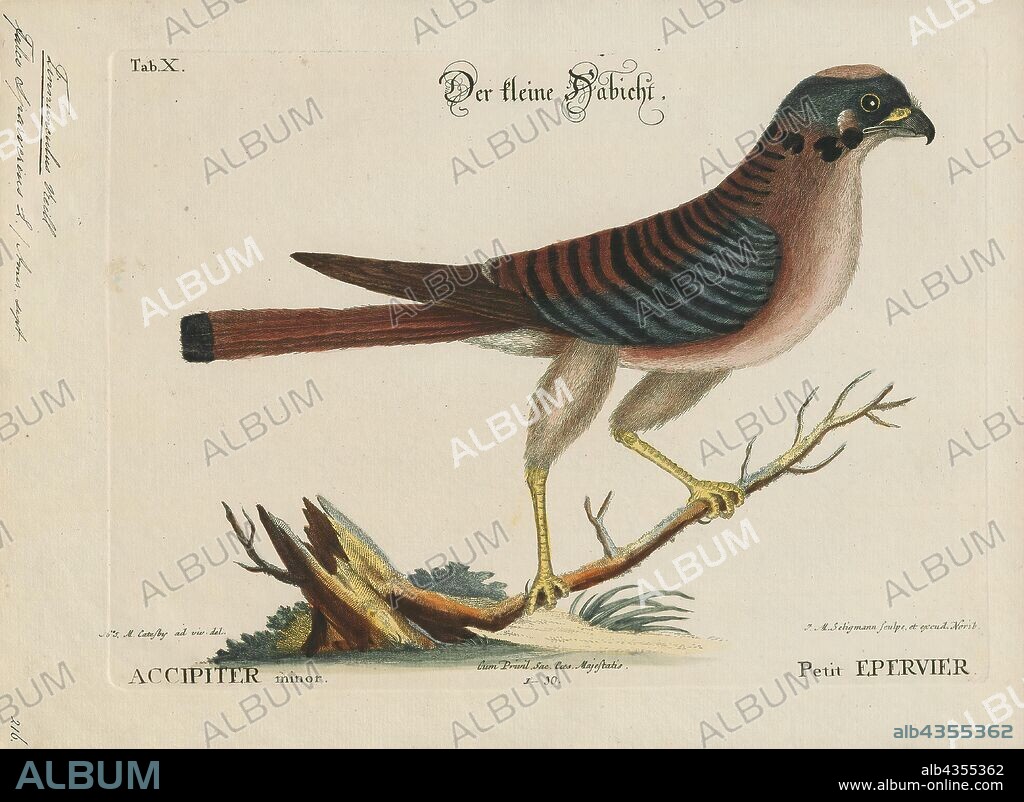alb4355362
Tinnunculus sparverius, Print, The American kestrel (Falco sparverius) is the smallest and most common falcon in North America. It has a roughly two-to-one range in size over subspecies and sex, varying in size from about the weight of a blue jay to a mourning dove. It also ranges to South America, and is a well-established species that has evolved seventeen subspecies adapted to different environments and habitats throughout the Americas. It exhibits sexual dimorphism in size (females being moderately larger) and plumage, although both sexes have a rufous back with noticeable barring. Its plumage is colorful and attractive, and juveniles are similar in plumage to adults., 1700-1880.

|
Ajouter à une autre Lightbox |
|
Ajouter à une autre Lightbox |



Avez-vous déjà un compte? S'identifier
Vous n'avez pas de compte ? S'inscrire
Acheter cette image
Légende:
Voir la traduction automatique
Tinnunculus sparverius, Print, The American kestrel (Falco sparverius) is the smallest and most common falcon in North America. It has a roughly two-to-one range in size over subspecies and sex, varying in size from about the weight of a blue jay to a mourning dove. It also ranges to South America, and is a well-established species that has evolved seventeen subspecies adapted to different environments and habitats throughout the Americas. It exhibits sexual dimorphism in size (females being moderately larger) and plumage, although both sexes have a rufous back with noticeable barring. Its plumage is colorful and attractive, and juveniles are similar in plumage to adults., 1700-1880
Crédit:
Album / quintlox
Autorisations:
Modèle: Non - Propriété: Non
Questions sur les droits?
Questions sur les droits?
Taille de l'image:
4630 x 3385 px | 44.8 MB
Taille d'impression:
39.2 x 28.7 cm | 15.4 x 11.3 in (300 dpi)
Mots clés:
ADULTE • AMÉRIQUE DU SUD • AMERIQUE • AMERIQUE, CONTINENT • CONTINENT AMERIQUE • EMPREINTE • FEMELLE • FEMM • FEMME • SEXE • TOURTERELLE TRISTE
 Pinterest
Pinterest Twitter
Twitter Facebook
Facebook Copier le lien
Copier le lien Email
Email
